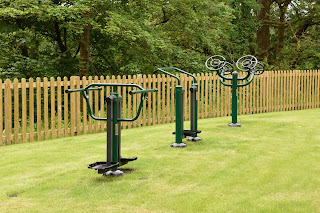Creating Better Learning Spaces: Why Quality Matters in School Furniture
In today’s evolving educational landscape, the importance of investing in high-quality school furniture is more evident than ever. With students spending the majority of their day in classrooms, the furniture they use plays a vital role in shaping their comfort, engagement, and academic performance. Educational institutions across the UK are placing increased emphasis on ergonomics, functionality, and durability in their furniture choices—and for good reason.
From chairs and desks to modular storage systems and collaborative workstations, the design and layout of school environments can influence not only student posture and physical health but also their cognitive development and overall learning experience. This article explores the reasons why carefully selected school furniture is a crucial part of the educational ecosystem and how institutions can make informed decisions when choosing classroom setups.
The Value of Purpose-Built Furniture for Schools
When selecting furniture for schools, it's essential to understand the unique needs of both students and educators. Unlike standard furniture, classroom furniture must cater to a wide range of age groups, support active learning, and withstand heavy use. Chairs and desks, for instance, must be properly scaled for different age ranges—from early years to secondary education—to promote correct posture and prevent long-term musculoskeletal issues.
Moreover, furniture in an academic setting must encourage flexibility and collaboration. Traditional lecture-style arrangements are being replaced by dynamic classroom layouts where students can interact, discuss, and brainstorm in group settings. Schools are increasingly turning to modular tables and mobile storage solutions that can be reconfigured easily to suit various teaching styles.
Quality furniture designed specifically for schools improves not only comfort and health but also fosters a more engaging and stimulating environment. This leads to better focus, participation, and academic performance. Therefore, furniture for schools should never be an afterthought—it should be an integral part of any curriculum planning process.
How School Furniture Shapes Learning Environments
The term "school furniture" encompasses a vast array of products, including desks, chairs, computer workstations, storage units, teacher stations, and more. Each of these elements plays a role in supporting the learning experience.
Modern classrooms are no longer passive spaces where students sit still for hours. Today’s classrooms must support interactive, hands-on learning. Ergonomic chairs and height-adjustable desks enable movement and adaptability, ensuring that students can shift comfortably throughout the day. Meanwhile, collaborative tables and soft seating areas encourage peer interaction and group work.
School furniture is also increasingly being designed with inclusivity in mind. Adjustable furniture can accommodate children with special needs or physical limitations, ensuring that every child can participate fully in classroom activities. The use of calming colours, rounded edges, and tactile-friendly materials also contributes to a safe and welcoming atmosphere.
Durability is another key factor. School environments experience significant wear and tear, so furniture must be made from robust materials that can handle daily use without compromising on aesthetics or safety. Anti-scratch laminates, steel frames, and stain-resistant fabrics ensure long-lasting performance, which reduces long-term costs and maintains a professional appearance.
Innovations in Educational Furniture Design
Technological advancements have influenced nearly every aspect of life—including education. Furniture that incorporates technology, such as charging stations, built-in tablets, or cable management systems, supports the use of digital tools in learning.
In recent years, the rise of STEM and STEAM learning environments has driven demand for specialised furniture. Makerspaces, science labs, and robotics classrooms often require heavy-duty workbenches, storage for tools, and flexible layouts that encourage experimentation and creativity. This trend shows that school furniture must not only support general classroom use but also cater to subject-specific needs.
Additionally, the push for sustainability has reached the educational sector. Schools are increasingly seeking furniture made from recycled or recyclable materials. Brands that offer eco-friendly furniture options or those certified with environmental standards provide schools with the opportunity to align their purchasing decisions with sustainability goals.
Choosing the Right Supplier for Long-Term Success
Selecting a trusted supplier is critical to ensuring the furniture you choose aligns with your school’s needs, budget, and long-term vision. A reputable provider will not only offer a wide range of furniture solutions but also provide support with layout planning, installation, and aftercare services.
School Furniture Direct is one such supplier known for offering comprehensive furniture solutions tailored to educational settings. Their catalogue includes classroom chairs, desks, storage units, and more—each designed to meet the demands of modern schools. With expert guidance and a focus on durability, ergonomics, and innovation, they help educational institutions create inspiring and functional learning environments.
By working with knowledgeable providers, schools can avoid common pitfalls such as mismatched sizes, non-compliant materials, or products that wear out prematurely. Investing in quality school furniture from reliable sources ensures a smooth procurement process and contributes to long-term success.
Tailoring Learning Spaces to Modern Needs
Every school is unique, and so are its requirements. A one-size-fits-all approach rarely works in educational environments. That’s why it's important to assess the specific needs of your institution before making purchases. Factors such as class sizes, subject specialisations, available space, and teaching styles should all influence furniture selection.
Customisable furniture options allow schools to tailor solutions to their specific teaching methodologies. For example, flexible seating arrangements can benefit younger students who require more movement, while static workstations may be more suitable for exam-oriented environments.
Additionally, involving teachers and students in the selection process can provide valuable insights. After all, they are the ones using the furniture daily. Their feedback can guide choices that improve comfort, usability, and satisfaction across the board.
Conclusion
Quality school furniture is far more than a basic classroom necessity—it’s a tool that supports learning, enhances health, and improves engagement. Educational institutions that invest in well-designed, durable, and adaptable furniture are making a long-term commitment to student success and teacher well-being.
By understanding the significance of thoughtful furniture choices and partnering with experienced providers like School Furniture Direct, schools can transform their classrooms into vibrant hubs of learning, creativity, and collaboration.



Comments
Post a Comment